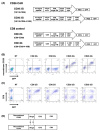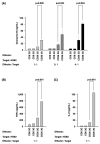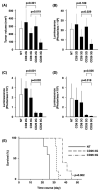Development of a Novel CD26-Targeted Chimeric Antigen Receptor T-Cell Therapy for CD26-Expressing T-Cell Malignancies
- PMID: 37626869
- PMCID: PMC10453178
- DOI: 10.3390/cells12162059
Development of a Novel CD26-Targeted Chimeric Antigen Receptor T-Cell Therapy for CD26-Expressing T-Cell Malignancies
Abstract
Chimeric-antigen-receptor (CAR) T-cell therapy for CD19-expressing B-cell malignancies is already widely adopted in clinical practice. On the other hand, the development of CAR-T-cell therapy for T-cell malignancies is in its nascent stage. One of the potential targets is CD26, to which we have developed and evaluated the efficacy and safety of the humanized monoclonal antibody YS110. We generated second (CD28) and third (CD28/4-1BB) generation CD26-targeted CAR-T-cells (CD26-2G/3G) using YS110 as the single-chain variable fragment. When co-cultured with CD26-overexpressing target cells, CD26-2G/3G strongly expressed the activation marker CD69 and secreted IFNgamma. In vitro studies targeting the T-cell leukemia cell line HSB2 showed that CD26-2G/3G exhibited significant anti-leukemia effects with the secretion of granzymeB, TNFα, and IL-8, with 3G being superior to 2G. CD26-2G/3G was also highly effective against T-cell lymphoma cells derived from patients. In an in vivo mouse model in which a T-cell lymphoma cell line, KARPAS299, was transplanted subcutaneously, CD26-3G inhibited tumor growth, whereas 2G had no effect. Furthermore, in a systemic dissemination model in which HSB2 was administered intravenously, CD26-3G inhibited tumor growth more potently than 2G, resulting in greater survival benefit. The third-generation CD26-targeted CAR-T-cell therapy may be a promising treatment modality for T-cell malignancies.
Keywords: CAR-T; CD26; T-cell malignancies; fratricide; third-generation.
Conflict of interest statement
The authors declare no conflict of interest.
Figures






References
-
- Ohnuma K., Hosono O., Dang N.H., Morimoto C. Dipeptidyl Peptidase in Autoimmune Pathophysiology. Adv. Clin. Chem. 2011;53:51–84. - PubMed
Publication types
MeSH terms
Substances
LinkOut - more resources
Full Text Sources
Other Literature Sources
Research Materials
Miscellaneous

